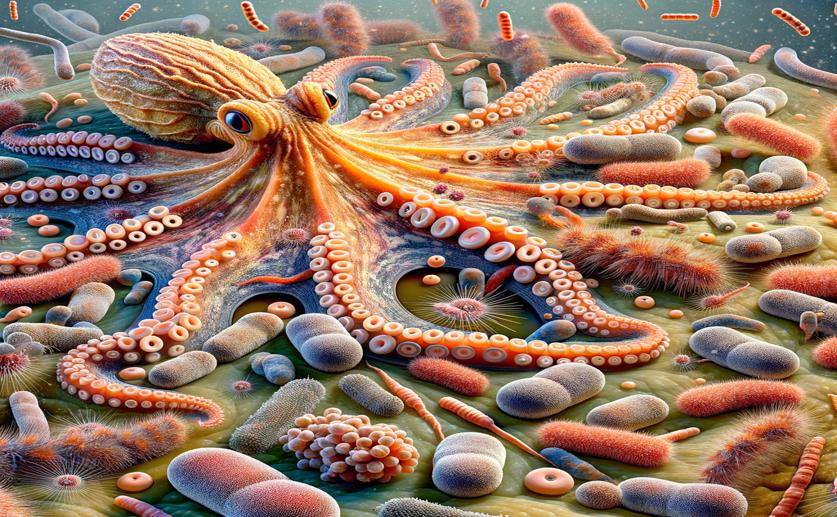
How Evolution Shapes the Microbes in Octopus Reproductive Organs
Jim Crocker
23rd March, 2024

Image Source: Natural Science News, 2024
Key Findings
- Cephalopods have a special organ, the ANG, housing bacteria that protect their eggs
- Different cephalopod species have unique bacterial communities in their ANGs
- Closely related cephalopods tend to have similar, yet distinct, bacterial partners
GeneticsMarine BiologyEvolution
References
Main Study
1) Evolutionary history influences the microbiomes of a female symbiotic reproductive organ in cephalopods.
Published 20th March, 2024
https://doi.org/10.1128/aem.00990-23
Related Studies
2) "Failure To Launch": Development of a Reproductive Organ Linked to Symbiotic Bacteria.
3) Host phylogeny, habitat, and diet are main drivers of the cephalopod and mollusk gut microbiome.
4) Microbiomes of microscopic marine invertebrates do not reveal signatures of phylosymbiosis.



 9th March, 2024 | Jim Crocker
9th March, 2024 | Jim Crocker